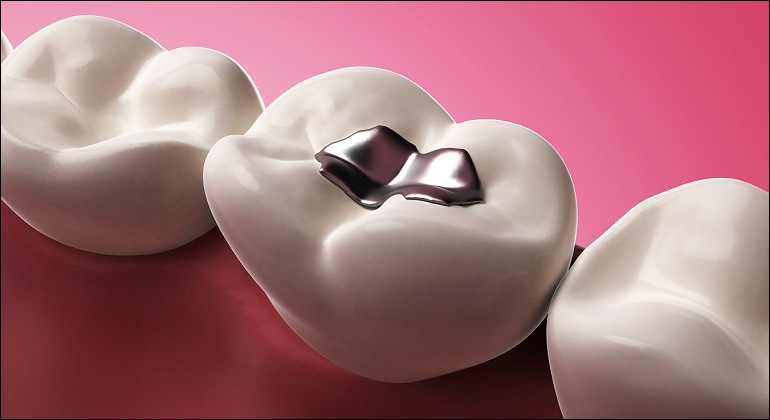
What is tooth Fillings?
Tooth fillings replace decayed or damaged tooth material in cases where the cavity or damage is relatively small. In addition to protecting the tooth from further decay and the resulting pain for the patient, fillings can reduce sensitivity by covering areas that have lost their protective enamel.
Composite Resin Fillings
Composite material is sometimes called “white” filling material because of the natural, tooth color of the resin, which is made in many different shades of white so the dentist can pick the right color for your teeth. Hard plastic that bonds to the tooth, composite fillings are quite durable are are used in front teeth and molars alike. At Beyond Braces, we use a composite material that is particularly quick-curing. This cuts down on the time you spend in the chair. Unlike inlays and onlays that are crafted in an outside lab, composite fillings can be made on-site and completed in only one office visit.
Camparision of Composite and Metal Fillings
- Both metal and composite fillings are durable.
- Composites require far less drilling and loss of healthy tooth structure than do metal fillings.
- Metal amalgams and gold expand and contract when exposed to heat and cold. This movement weakens the tooth wall and can cause fractures. It also allows bacteria to enter and cause decay.
- Where metal fillings only serve to fill up the holes, composite materials are applied with bonding techniques and thus become more nearly part of the teeth.
- Amalgam is a mixture of metals, including mercury, a toxic element. The amount of mercury that is released from amalgams and the long-term effects on health are subjects of current controversy.
- Composites are tooth-colored and therefore more natural-looking than metal fillings.
- Filling with composite material usually requires less drilling than with metal, so more of the tooth is left intact.
- Composites do not cause the sensitivity that is often associated with metal fillings.
